Rank Genus | Suborder Redlichiina Scientific name Paradoxides Higher classification Paradoxididae | |
 | ||
Lower classifications Paradoxides davidis, Paradoxides gracilis | ||
Paradoxides gracilis big head
Paradoxides is a genus of large to very large trilobites found throughout the world during the Mid Cambrian period. One record-breaking specimen of Paradoxides davidis is 37 cm (15 in). It has a semicircular head, free cheeks each ending with a long, narrow, recurved spine, and sickle-shaped eyes, providing almost 360° view, but only in the horizontal plane. Its elongated trunk was composed of 19-21 segments and was adorned with longish, recurved lateral spines. Its pygidium (caudal shield) was comparatively small. Paradoxides is a characteristic Middle Cambrian trilobite of the 'Atlantic' (Avalonian) fauna. Avalonian rocks were deposited near a small continent called Avalonia in the Paleozoic Iapetus Ocean. Avalonian beds are now in a narrow strip along the East Coast of North America, and in Europe.
Contents
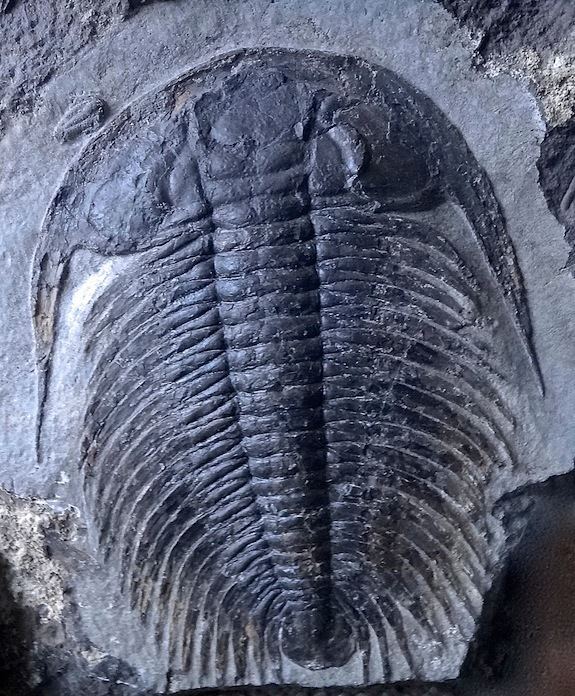
Description

The exoskeleton of Paradoxides is large to very large, relatively flat, oval to inverted egg-shaped, and about one and a half times longer than wide, with the greatest width across the genal spines. The headshield (or cephalon) is close to semicircular with long spines developing from the corners of the cephalon. As usual in trilobites, the dorsal suture runs along the top of the eye. As in all Redlichiina, this suture runs from the back of the eye slightly outward to the rear margin of the cephalon (a state called opisthoparian) opposite the base of the pleural spines. From the front of the eye the suture describes a slight S-curve forward cutting the front margin in front of the eye. The central raised area of the cephalon (or glabella) is divided in the occipital ring furthest to the back, followed by the first lobe that is, like the occipital ring, defined by a furrow across the midline and two more lobes that have furrows that do not connect across the midline. The frontal lobe is the widest and shaped like a segment of a circular band. It almost reaches the frontal edge of the cephalon. The eyelobe is short, opposite the first to third glabelar lobes. Paradoxides has a palate (or hypostome) with its front aligned with the front of the glabella and connected to the doublure (a condition science calls conterminant). Exceptionally, the hypostome is even fused with the frontal part of the doublure (called rostral plate), a character that distinguishes it from all other trilobites, except some Cambrian Corynexochida such as Oryctocephalus, and Fieldaspis.
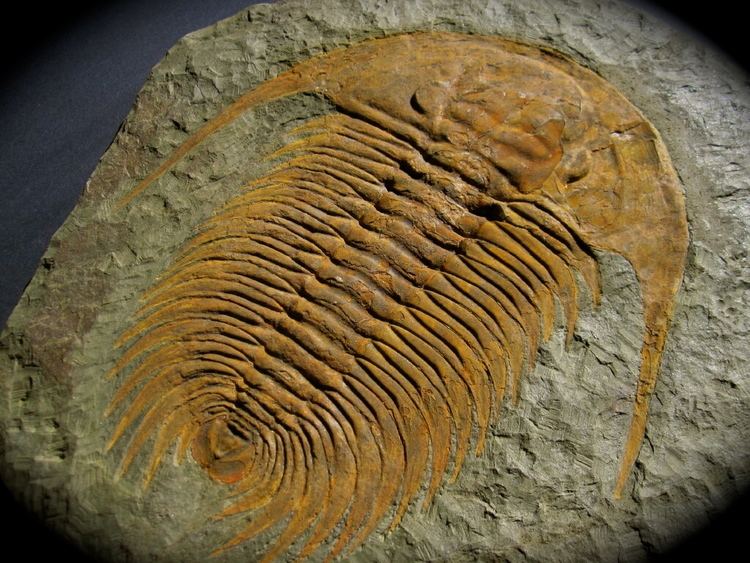
The articulate midpart of the exoskeleton (or thorax) consists of 19-21 segments. The axis is about as wide as each of the ribs (or pleurae) to its sides, not counting the spines at their tips, which gradually arch further back while slightly increasing in length, while the spines on the rear thoracic segment are much longer, about twice as long as the associated pleurae, are directly entirely backwards, and extend convincingly beyond the pygidium.
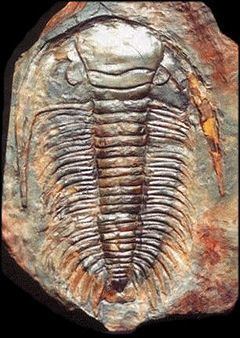
The tailshield (or pygidium) is small and shows the axis with one or two rings and may be partially or completely fused to the last thoracic segment. The axis does not reach the rear margin of the pygidium and defines a U-shaped pleural field.
Ontogeny
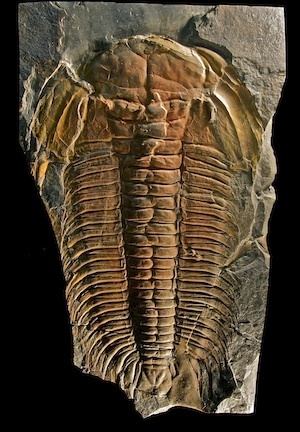
The larval development (or ontogeny) of Paradoxides was already described by Barrande (in 1852). The earliest stage (or protaspis) is a disc with three pairs of spines on the margin. Genal spines are placed at halflength directed at about 45° outward and backward, curving slightly further backwards and almost a third of the diameter of the protaspis long. Sharply pointed intergenal spines, about 50% of the disc diameter long, are positioned at the back of the future cephalon, are straight and pointing backwards and 15° outward. These spines will have disappeared in adult specimens. The first of future thoracic spines are placed immediately next to the intergenal spines and curve to a parallel with the midline. The front of the glabella almost reaches the front and consists of four sets of lobes divided by a furrow on the midline in the frontal two-thirds, and furrows between them. The most backward set consisting of two central and two lateral lobes. Further backwards is the final element of the glabella, one central occipital lobe that carries a small node, and two lateral occipital lobes. The axis is terminated with three rings of somewhat decreasing width. Midlength of the side of the most glabellar lobes run semicircular eyelobes parallel to the margin of the exoskeleton, ending near the base of the intergenal spine
Behaviour
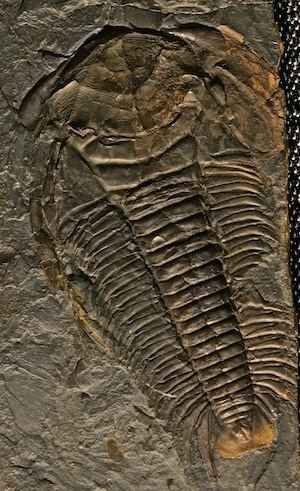
Like in many early trilobites, the thorax of Paradoxides consists of so-called nonfulcrate segments, that allow for rolling like a pancake, providing protection from front, rear, top, and bottom, while leaving access to the soft ventral side of the animal from each of the sides.
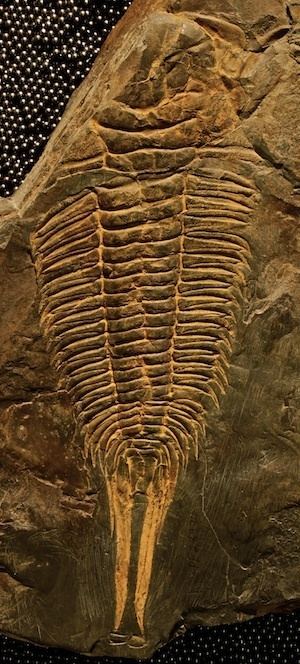
Complete specimens of Paradoxides have been found with the free cheeks (or librigenae) and the fused palate (hypostome) and lip (or rostral plate) upside down and front to back beneath the remainder of the exoskeleton (consisting of the so-called cranidium, thorax, and pygidium). This suggests that in moulting, the body was arched above the substrate, with the anterior border at the front and pleural spines of rear thoracic segments dug into sediment. Stretching the body would then result in rupturing the sutures in the cephalon and flipping of the librigenae plus hypostome-rostral plate. After these parts had broken away, the animal would exit moving forward from its old exoskeleton, that would also have consisted of a chitinous ventral part, including that of the legs.
Specimens of Paradoxides have been found containing intact Peronopsis trilobites between glabella and hypostome and where the gut would have been, and these are assumed to have not been food items of the large trilobite, but instead either scavenged on its digestive track, or found shelter.
Reassigned species
A number of species previously assigned to the genus Paradoxides have since been transferred to other genera:
